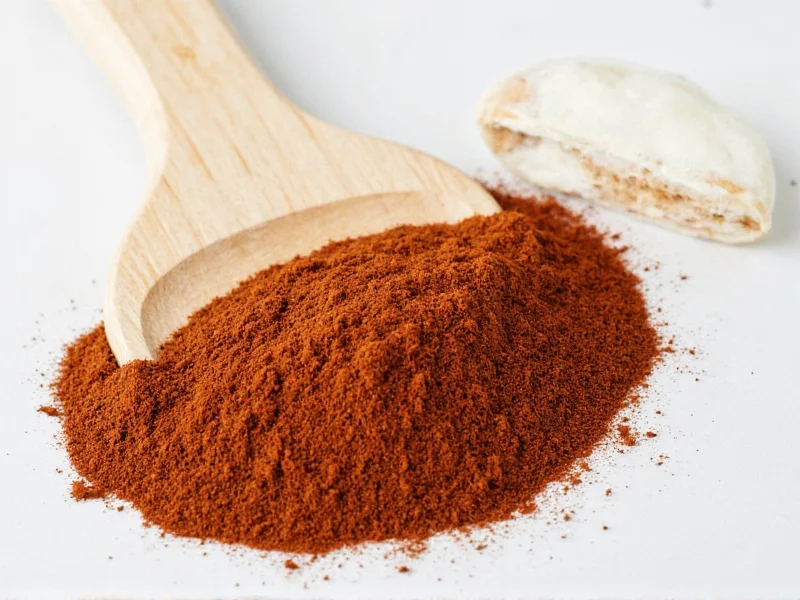Understanding Adobo All Purpose Seasoning Composition
Adobo seasoning's distinctive flavor comes from its carefully balanced blend of dried herbs and spices. The core ingredients typically include:
| Primary Ingredient | Flavor Contribution | Percentage in Blend |
|---|---|---|
| Salt | Base flavor enhancer | 35-40% |
| Garlic Powder | Savory depth | 20-25% |
| Onion Powder | Sweetness and complexity | 15-20% |
| Dried Oregano | Earthy, slightly bitter notes | 8-12% |
| Black Pepper | Subtle heat | 5-8% |
| Turmeric | Color and mild earthiness | 3-5% |
Some commercial blends may include additional ingredients like cumin, paprika, or citrus powder, but the traditional formulation maintains simplicity. The absence of liquid components distinguishes adobo seasoning from adobo sauce, which contains vinegar and is used as a wet marinade.
Practical Applications in Everyday Cooking
Chefs and home cooks value adobo seasoning for its versatility across protein types and cooking methods. When exploring adobo seasoning uses, consider these applications:
- Meat preparation: Rub directly onto chicken, pork, or beef before grilling, roasting, or pan-searing. The salt content helps form a flavorful crust while the spices penetrate the surface.
- Vegetable enhancement: Toss roasted vegetables with 1-2 teaspoons per pound for Mediterranean-inspired dishes.
- Rice and grain seasoning: Add to cooking water for flavorful side dishes that complement Latin American and Filipino meals.
- Soup and stew base: Sauté with onions and garlic at the beginning of soup preparation to build flavor depth.
- Marinade component: Combine with olive oil and citrus juice for wet marinades when you want both dry and liquid flavor elements.
Unlike many spice blends, adobo seasoning works effectively at various cooking stages. Add it early for deeper flavor integration or sprinkle toward the end for brighter herb notes. This flexibility makes it valuable for understanding how to use adobo seasoning properly in different culinary contexts.
Common Misconceptions About Adobo Seasoning
Many home cooks confuse adobo seasoning with related products. Clarifying these distinctions helps maximize its culinary potential:
- Adobo seasoning vs. adobo sauce: The dry seasoning contains no liquid ingredients, while adobo sauce includes vinegar, garlic, and sometimes peppers in a wet paste form.
- Adobo vs. sofrito: Sofrito is a wet base of sautéed onions, peppers, and herbs, whereas adobo is a dry spice mix.
- Regional variations: Filipino adobo seasoning often includes bay leaves and peppercorns, while Latin American versions emphasize oregano and garlic.
- Sodium content: Commercial blends can be high in salt, so check labels if monitoring sodium intake—many brands offer reduced-sodium versions.
Creating Your Own Adobo Seasoning Blend
When seeking an adobo seasoning substitute or wanting to control ingredients, homemade versions offer customization. A basic recipe includes:
- ¼ cup garlic powder
- 3 tablespoons onion powder
- 2 tablespoons dried oregano
- 1½ tablespoons black pepper
- 1 tablespoon turmeric
- ½ cup salt (adjust to taste)
Mix thoroughly and store in an airtight container. For a salt-free version, omit the salt and increase the garlic and onion powder proportionally. This DIY approach addresses common concerns about what is in adobo seasoning when commercial products contain unwanted additives.
Storage and Shelf Life Considerations
Proper storage maintains adobo seasoning's potency. Keep your blend in an opaque, airtight container away from heat and light. Under these conditions, dry adobo seasoning retains optimal flavor for 6-12 months. Discard if you notice:
- Faded color (particularly the vibrant yellow from turmeric)
- Diminished aroma when opening the container
- Clumping that doesn't break apart easily
For extended freshness, consider storing smaller quantities in the refrigerator, especially in humid climates where moisture can degrade dried spices more quickly.
Adapting Adobo Seasoning for Dietary Needs
This versatile blend accommodates various dietary requirements with simple modifications:
- Low-sodium diets: Replace salt with potassium chloride or dramatically reduce salt content while increasing garlic and onion powder
- Anti-inflammatory diets: Increase turmeric content and add a pinch of black pepper to enhance curcumin absorption
- Allium-free diets: Substitute garlic and onion powder with asafoetida (hing) for similar savory notes without triggering sensitivities
Understanding these adaptations helps home cooks incorporate adobo seasoning into specialized meal plans while maintaining authentic flavor profiles.
Frequently Asked Questions
Can I use adobo seasoning instead of adobo sauce in recipes?
No, they serve different purposes. Adobo seasoning is a dry spice blend while adobo sauce contains liquid ingredients like vinegar. To substitute, use 1 tablespoon adobo seasoning plus 2 tablespoons vinegar or citrus juice for every ¼ cup adobo sauce required.
What's the difference between Goya adobo and regular adobo seasoning?
Goya adobo is a specific commercial brand of adobo seasoning. While it follows the traditional formulation, some home cooks note it contains additional ingredients like cumin and coriander not found in basic adobo blends. The core flavor profile remains similar across brands.
How much adobo seasoning should I use per pound of meat?
For optimal flavor without overpowering, use 1-2 teaspoons of adobo seasoning per pound of meat. Adjust based on personal preference and whether you're using it as a dry rub or incorporating into a marinade. Remember that commercial blends vary in salt content, so taste before adding additional salt.
Is adobo seasoning gluten-free?
Pure adobo seasoning blends containing only spices and salt are naturally gluten-free. However, some commercial products may be processed in facilities that handle gluten-containing ingredients. Always check labels if you have celiac disease or severe gluten sensitivity, as cross-contamination can occur.











 浙公网安备
33010002000092号
浙公网安备
33010002000092号 浙B2-20120091-4
浙B2-20120091-4